The merits of "battoning" wood are well established. For one you cannot split wood that small in diameter with an axe very well. The more important aspect is that the wood is long enough so that you can get a lot of long curls or small thick wood shavings for a fire. Saturday when I did that I actually split one section 5 foot in length (a bit too tall) for extra long pieces because it was 90% humidity and raining off and on (this is why I order stainless, micarta and waxed sheath) Needed plenty of dry material to get it going. You can't split smaller stuff with an axe very well let along long pieces. Plus the knife follows the grain and a small curve or knot won't cause you to get stuck or get an incomplete split.
Battoning too thick of wood is a bad idea and I find after ~15 years of doing this that getting the knife stuck in too big of wood is foolish and dangerous if it's stuck and you have a heavy log with a knife tip sticking out.
Battoning is not actually very hard on the knifes edge as the sides of the tool do most of the work. Hence why a dull knife or axe can split just fine for the most part.
Battoning wood takes little effort, is pretty gentle on the knife and low impact and safe as your not swinging anything but a blunt baton and it's not going very far.
I've broken one knife battoning and that was a ka bar in d2 with serrated blade. Serrated blades always fail at the serrations. I had been using it for a long time but it was cold out and that hickory had already taken its toll on several of my tools. ( a large hickory fell down and I processed and burned the whole thing within a month or so) this hickory caused the misalignment in a Busse combat and a Randall 1-6. Hickory is hard but it's also flexible, tough, and tight so it strings when you split it, most wood wants to separate.
I like axes mostly long ones as a short axe is dangerous. I love bow saws and I usually take the 36" with me when I know I'm making a fire.
One of my favorite tools is a panga machete, it can do a lot and the curved tip is great for checking trees (if they are hollow under the bark) cutting vines, moving coals around the fire you name it!
Plenty of people think battoning is knife abuse, it's not. It's way harder on the edge to chop with it. A knife gets damaged when it hits a flat spot. The edge fails to bite in and you impact the edge with force, chopping, battoning, dropping it you name it, it can roll then or break. Knots in wood are harder and round/flat and the grain changes this is why knots are hard on edges. Wood cut with an axe or knife is safer to baton as it's not flat on the end.
Here's a little winkler axe I liked but it had a light blade so it was more like a machete than an axe, less swing weight.
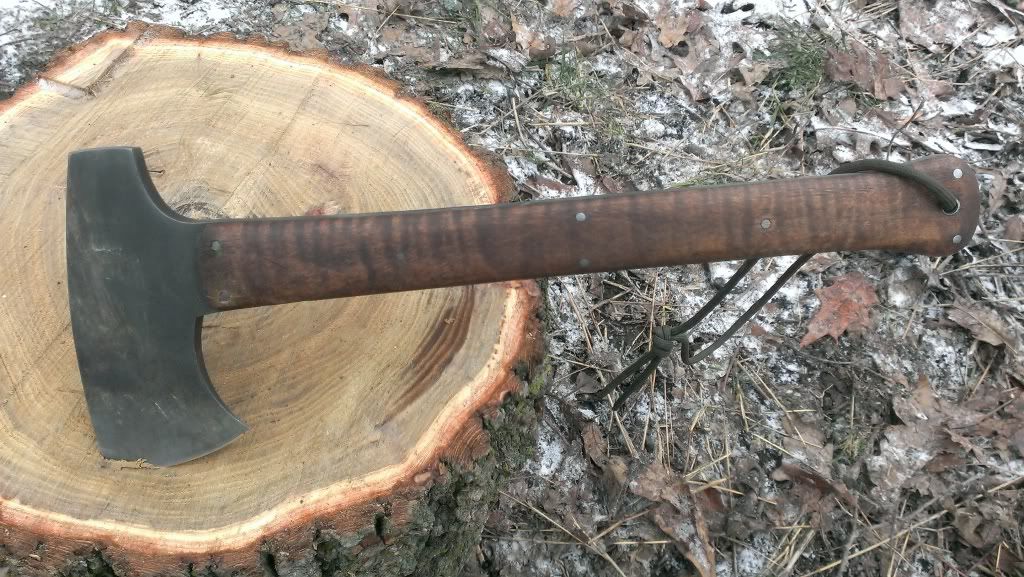
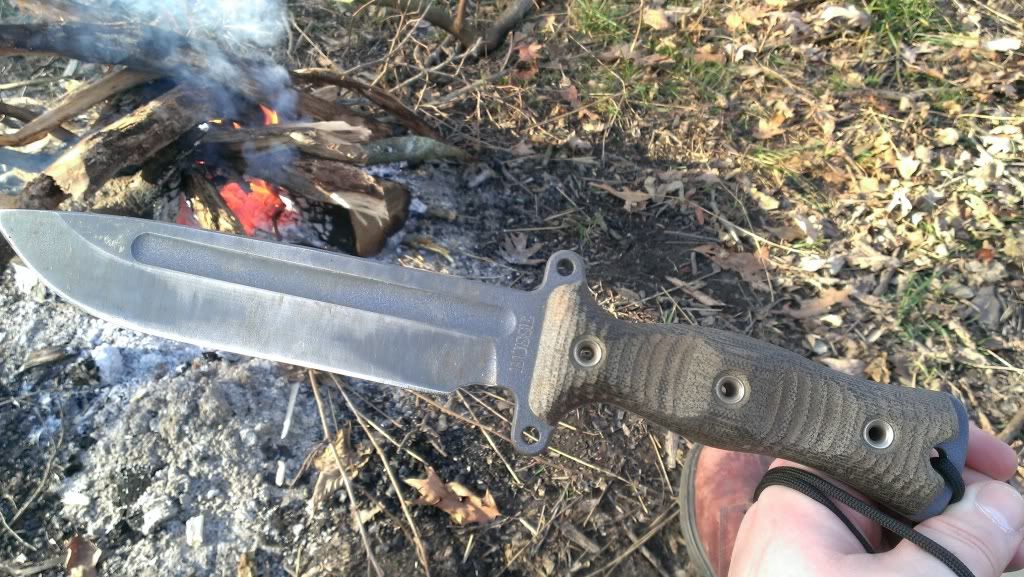
Ka bar broke after a lot of use! Plain edge would have lived.
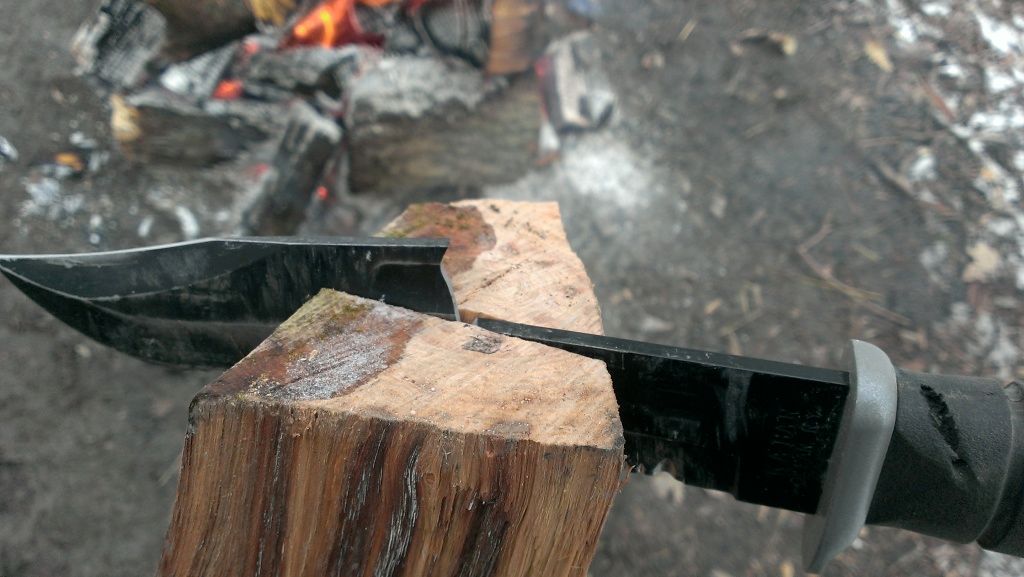
This Busse got a small bevel dent as in not the edge but a small bend.
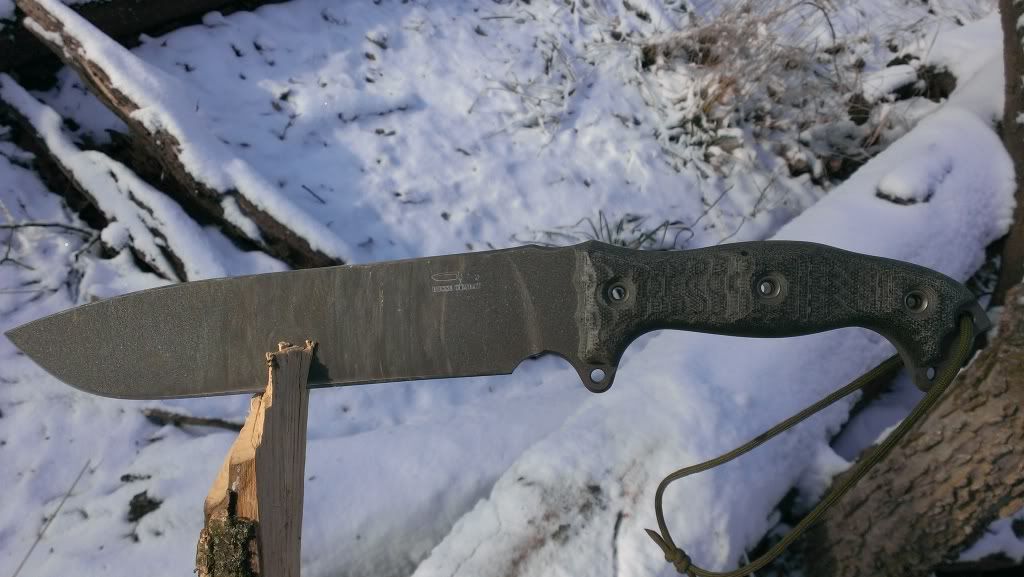
The blades will take a bend but always go true after!
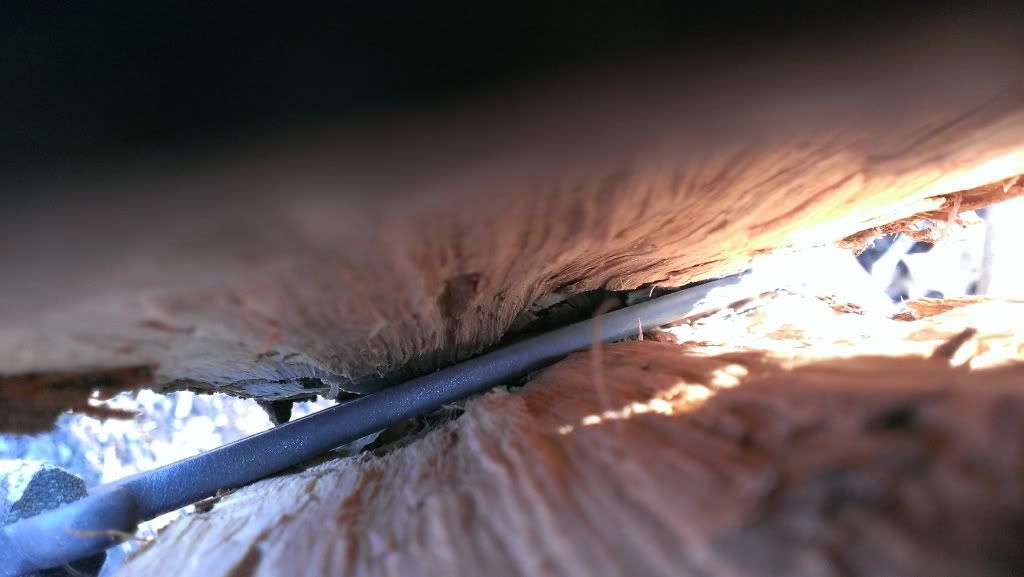
One of my first Randall's
















